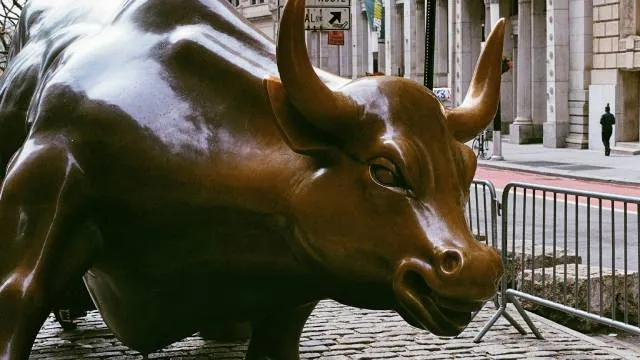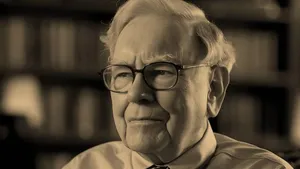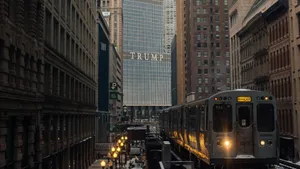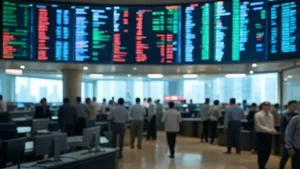Howard Marks on Where to Invest in 2025
In a world shaken by President Trump’s sweeping tariffs, legendary investor Howard Marks has a clear message: look to credit markets, not stocks. The famed value investor has been making this case since 20221, and recent market turmoil has only strengthened his conviction.
The New Reality: Why Interest Rates Changed Everything
For four decades (1980-2020), interest rates declined by a staggering 2,000 basis points, fueling asset price growth and creating an easy-money environment. This gradual shift went largely unnoticed, Marks says, like “the moving walkway at an airport” that propels you forward effortlessly.
But when inflation ballooned in 2021, the Federal Reserve ended this era with aggressive rate hikes. This fundamentally altered the investment landscape, creating what Marks calls a “sea change,” which demands investors significantly re-think their assumptions and beliefs about investment assets.
The Simple Case for Credit
Why should an investor prioritize bonds over stocks today? Marks offers three compelling reasons:
- Attractive Yields: High-yield bonds, as of May 2025,4 offer yields around 8%, up from about 7.2% just weeks ago. This represents a significant premium over the long-term historical average.
- Contractual Returns: Unlike stocks, where bulk of your return in the short or medium term depends on the behavior of the market, bonds provide returns through contracts. “You give a borrower money up front; they pay you interest every six months; and they give you your money back at the end,” Marks explains. This contractual nature creates reliability that stocks simply cannot match.
- Superior Risk-Adjusted Returns: While stocks have delivered approximately 10% annually over the past century, Marks emphasizes this hasn’t been true when starting with today’s elevated valuations. “Stocks have delivered an average of 10% a year for the last hundred years, but not when the p/e ratio was 19,” he notes. At current valuations, historical evidence suggests stock returns of only “1 to 6% a year; or 2 to 7% a year.”
Addressing Yield Spread Concerns
Skeptics point to historically narrow yield spreads — the premium investors receive for taking on risk above ‘risk-free’ Treasury bonds — as a reason for caution. Today’s spread is approximately 290 basis points, one of the narrowest on record.3
Marks dismisses this concern bluntly: “You can’t eat spread, or spend spread, or pay pension benefits with spread. For those things, you need returns… in the end, it’s the total return that matters.”
His analysis shows even these tight spreads should be sufficient. Historically, high-yield bonds have lost about two-thirds of their value when they default, with an average default rate of 3.5%. This translates to expected losses of about 230 basis points — still less than today’s 290-point spread; this means high-yield bonds today are, mathematically, still a better deal.
Most tellingly, Marks analyzed what would have happened if an investor purchased high-yield bonds at the all-time tightest spread in June 2007, just before the Global Financial Crisis. While returns were negative in the first year, over five, ten, and 15 years, high-yield bonds still outperformed Treasury bonds by approximately 3 percentage points annually.
The Trump Tariff Impact
How do the recent dramatic tariff announcements change this analysis? Marks calls this “the biggest change in the environment that I’ve seen probably in my career,” noting the shift from free trade toward more protectionist policies.
He warns this will likely increase inflation: “There were financial benefits from globalization, including keeping a lid on inflation… tariffs are an increased cost. Somebody has to pay them.”
Yet, despite market turbulence, credit investments have actually become more attractive; again: yields have recently risen from about 7.2% to 8%. Meanwhile, stocks have declined by 2.5% over the last year, and have been a rollercoaster in the last several weeks — crashing just after president Trump’s Liberation Day announcements, only to reverse losses with a historic rally following tariff pauses.
How to Invest $100,000 Today
Based on Marks’ analysis, here’s how a prudent investor might allocate $100,000 today:
- Allocate 60-70% to credit investments:
- Specific high-yield bonds that are extremely unlikely to default
- High-yield bond funds and ETFs
- Senior loan funds
- Some exposure to private credit through appropriate fund vehicles
- Maintain 20-30% in selective equity positions:
- Focus on companies with pricing power that can pass through inflation
- Consider value-oriented stocks with strong balance sheets
- Hold 10% in short-term cash instruments:
- To provide flexibility for opportunities that arise from market dislocations
The Bottom Line
The recent selloff, as Marks sees it: “Prices have come down… [things are] on sale. That should encourage people to think about buying.” But he cautions: “Will they go down further? Nobody knows.”
For the investor with $10,000 or $100,000 or even $10,000,000 to deploy today, Marks’ message is clear: favor credit instruments that offer contractual returns with yields approaching 8%, while being selective about equity exposure. Recent market turmoil has only strengthened the case for this approach, as bond yields have increased while stock prices have fallen.
The key lesson from Howard Marks is that in uncertain times, the contractual nature of bond returns provides a level of reliability that stocks cannot match — and today’s yields make that protection especially valuable.
References
- Marks, H. (2022) Sea Change. https://www.oaktreecapital.com/insights/memo/sea-change
- Marks, H. (2023) Further Thoughts on Sea Change. https://www.oaktreecapital.com/insights/memo/further-thoughts-on-sea-change
- Marks, H. (2025) Gimme Credit. https://www.oaktreecapital.com/insights/memo/gimme-credit
- Howard Marks on Bloomberg Podcast, April 2025: https://www.youtube.com/watch?v=P7r0X0fmCcU
This article accurately represents the views of Howard Marks and is being made available for educational purposes only, and should not be used for any other purpose. The information contained herein does not constitute and should not be construed as an offering of advisory services or an offer to sell or solicitation to buy any securities or related financial instruments in any jurisdiction. Certain information contained herein concerning economic trends and performance is based on or derived from information provided by independent third-party sources. Blockchainsure believes that the sources from which such information has been obtained are reliable; however, Blockchainsure cannot guarantee the accuracy of such information.





